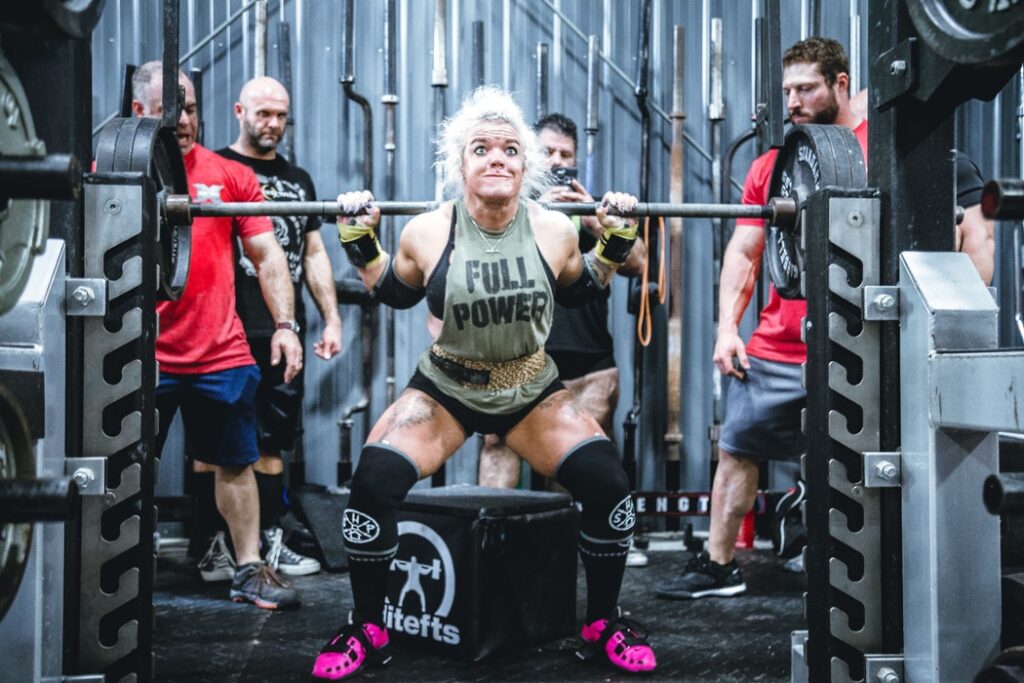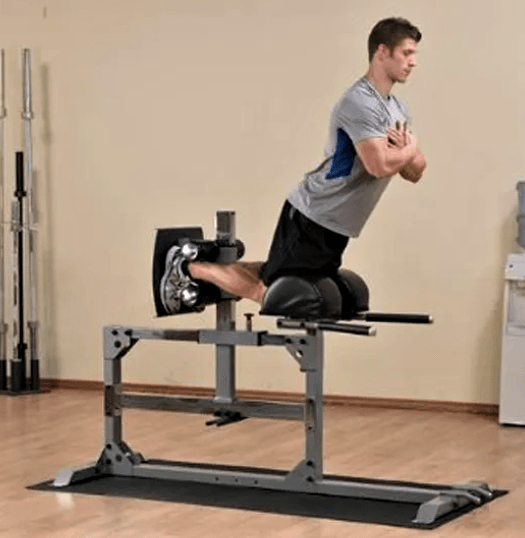Plateau. You could wander forever on the Tibetan Plateau, nearly a billion square miles a lofty three miles above sea-level. But look up. On the border are the Himalayas, including Mt. Everest. So, even on “The Roof of the World” there are paths for climbing much, much higher. So it is with strength. When you’re stuck using the same pounds for the same reps, you need a new route to reach higher numbers. There are always ways to get off the plateau and keep climbing. These are the eight best methods to overcome workout plateaus.
“There are no limits. There are only plateaus, and you must not stay there. You must go beyond them.” — Bruce Lee
1. START CYCLING.
Powerlifters know if they do the same workouts again and again, trying to squat, pull, or push a little more weight for the same reps or eke out an extra rep with the same weight, they’ll hit a wall. That’s why they cycle workouts. Over weeks, they move progressively more iron for progressively fewer reps. Ideally, they can then repeat the cycle with slightly more weight. Because the stimulus is perpetually changing, they’re never stuck on the same numbers.
If your strength is stagnant, get on a cycle. Here’s one of many ways to do it. In addition to your other exercises, pick one basic exercise per body part, and cycle it over 10 workouts, doing four sets and dropping your target reps every two workouts with corresponding increases in weight. This 10-week cycle progression looks like this:
10-WEEK WORKOUT CYCLE
Workouts 1-2: 4 sets of 12 reps
Workouts 3-4: 4 sets of 10 reps
Workouts 5-6: 4 sets of 8 reps
Workouts 7-8: 4 sets of 6 reps
Workouts 9-10: 4 sets of 4 reps
Then, when you next repeat the cycle, try to use slightly more weight on every set of the 10 week progression.
2. STICK TO THE STICKING POINT.
The reason an exercise plateaus usually comes down to just part of its range-of-motion—the dreaded sticking point. On the squat, it’s at the bottom, when you’re trying to rise out of the hole—the weakest biomechanical position. On the bench press, it’s probably in the middle, when your triceps and front deltoids begin taking on more work and your pectorals start slacking off. It could also be near the top when your triceps just don’t have enough oomph to lockout.

Find your sticking point, and do extra work in its range. This is another version of prioritization: Do more for your weaknesses and less for your strengths. With time and effort, sticking points get less sticky. Let’s focus more on the squat and bench press.
SQUAT
To work a squat’s deep end, perform box or bench squats. With these you will sit briefly at the bottom of each rep on a box or bench at the just-below-parallel position. This will help you gain the ability to power out of the hole. Do some box/bench squats and some regular squats in every leg workout or alternate box/bench one workout and regular squats the next.
BENCH PRESS
If your bench presses are failing to lock out, perform some of your sets in a power rack so the bar never comes beyond halfway down or while lying on the floor so your elbows can’t get lower than your back. Alternately, lower the bar to a pad or block on your chest. All such methods focus only on the top halves of reps. With time and effort you should gain the strength to power up your bench presses from your chest to lockout.
3. GO LIGHTER.
Let’s say your squat is mired at 315 pounds for 6 reps, give or take a rep. You can’t get to 8 with proper form, and you can only do four with 335. Workout after workout, month after month, it’s a mental barrier as much as a physical one. You’re butting up against your ceiling. Here’s the problem with low reps—and anything under eight is low—they decrease the odds for strength improvements. The lower your reps go, the truer this is.
Consider this. It’s much easier to eke out an extra rep when maxing out at 20 than at two. That’s because a 21st rep is only a 5% improvement, while going from two to three is a whopping 50% improvement! Of course, 20 and 2 are extremes, but the same logic applies to any set with a lighter weight for higher reps, even if it’s just the difference between 8 reps and 10 reps. Lighter weights and higher reps allow for easier gains.
For example, let’s return to that squat of 315 pounds for 6 reps. A seventh rep is a 16.66% increase. Double your odds of continuous progress by reducing the weight and doubling the reps: 265 for 12. An extra rep now is only an 8.33% increase. When you can repeatedly get 15 reps, increase the weight to 285 and start again with 12.
By lightening the load, you make it easier to advance and therefore avoid physical and mental plateaus.
4. GO HEAVIER.
Don’t forget what you just read about going lighter, but understand that there may be times to do the opposite. Going heavier can supplement going lighter to accustom your body and mind to more metal. Let’s go back to that 315 pounds for 6 reps. A rep calculator says you should be able to get 365 for a single rep. Do it. Pyramid up, slip a couple of quarters onto that 315 that has you stumped, use a spotter, and dip down in the hole and back up with that extra 50 pounds. In and of itself, that one-rep squat wasn’t a strength improvement. After all, the calculator already predicted you’d max out there.
However, that maximal resistance accustoms your body—muscles, ligaments, joints, bones—to a heavier load. You learn how to step back with an extra 50 on your shoulders, set yourself, and drop down and rise up in the groove. It also habituates you to conquering ever-bigger weights. Afterwards, 335 won’t seem so intimidating, because you’ve already manhandled 30 pounds more than that when you did 365.
Do this only rarely, but a maximum one-rep load can prepare you for handling ever-greater metal for reps.
5. WORK THE SECONDARIES.
In compound lifts, secondary muscles are frequently the weakest links. Let’s look at just two examples: barbell rows and squats. Barbell rows recruit the biceps and rear deltoids to help the muscles of the upper back pull your elbows (and the weight) up. It’s likely you’re not neglecting biceps, but you may be underworking rear delts. Prioritize them. Hit them with two exercises (each for three, high-intensity sets) at least once weekly, and your row numbers should climb.
There are many squat assistance exercises, but powerlifters focus especially on those that target the posterior chain: glutes, spinal erectors, and hamstrings. Glute-ham raises, good mornings, and Romanian deadlifts are three such exercises that work all three of those areas together. If you want a bigger squat, think like a powerlifter and try adding one or two posterior chain exercises to your routine.

6. ALTER THE STRESS.
If you want bigger lifts, do what some of the biggest lifters do, and attach chains or bands to the barbell. This may be another way of attacking the sticking point—as the weight rises, it grows heavier as more chain links come off the floor or the bands stretch—or it may just be a way of altering the stress.
For example, if your biceps strength isn’t improving, attach a chain to each side of the bar for your preacher curls, and the top halves of reps—previously easier than the bottom as the gravitational pull lessened—will be harder as resistance grows the farther the bar travels up and more chain links are pulled off the floor. Try alternating chained and chain-free sets, and you should feel stronger in the latter, in the same way a baseball batter swings faster when he removes the bat’s warmup donut.
Another way of modifying stress is to do the same exercise differently. Do incline dumbbell presses instead of the barbell variety or row underhand instead of overhand. In addition to altering the angles of attack and ranges of motion, even a minor changeup can be refreshing. Enthusiasm is the most underrated training component, and staying stuck in a strength rut with the same exercises done the same way is often self-perpetuating. Boredom rises, intensity wanes.
Change exercises to change your attitude.
7. GO A DIFFERENT WAY.
Powerlifters and weightlifters need to keep their focus on competition exercises. Bodybuilders have no such restrictions. When there’s an unwavering obstacle in your way—such as deadlift strength that refuses your best attempts to advance it—avoid it. Stop doing things that have plateaued. Doggcrapp, a colorfully titled bodybuilding system which prioritizes strength gains, prescribes swapping out one exercise for another after failing to get a personal best the previous time you did it. In that way, you’re forever focused on progressive results.
Also, never do the same exercises for a body part twice in a row. Another Doggcrapp principle is the rotation of three routines per body part. You might try to get a personal best in the barbell row one workout, the front pulldown the next, and the deadlift in the third, and then start again with the barbell row in back session No. 4. That’s assuming your strength progressed the previous time you barbell rowed. If it didn’t, you’ll swap in, say, low cable rows for that workout.
Doggcrapper or not, try rotating exercises and replace any that stagnate.
8. TAKE A BREAK.
Finally, we’ve reached the Homer Simpson strategy for plateau shattering: Slump on the couch and watch TV (beer is optional), or at least avoid the gym for a week or two. Have you ever returned to the gym after a vacation and noticed you’re stronger than before? It may signify that you were overtraining before the layoff, or it may just be that your mind and body were recharged by the respite.

Try taking two weeks off from weight-training. If you want, do cardio, though ideally without stepping in a gym. Hiking anyone? Afterward, you’ll probably hear the iron calling you back, and you may find that, when you slide onto that bench or duck under that bar again, you’ve recovered enough strength and rediscovered enough motivation to power through previous plateaus and keep climbing ever higher.

















































